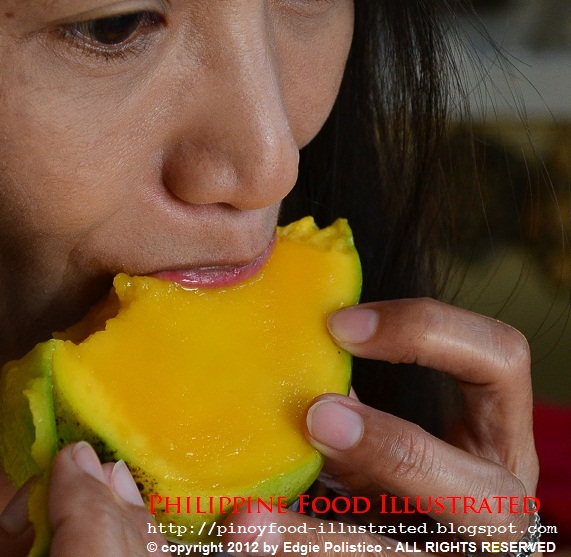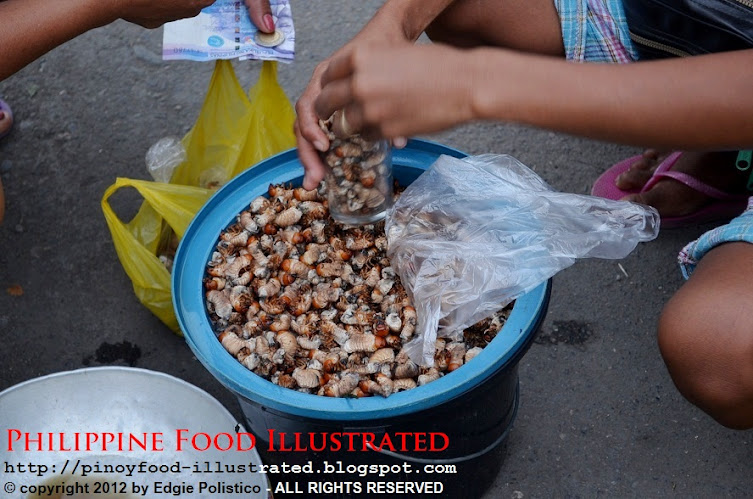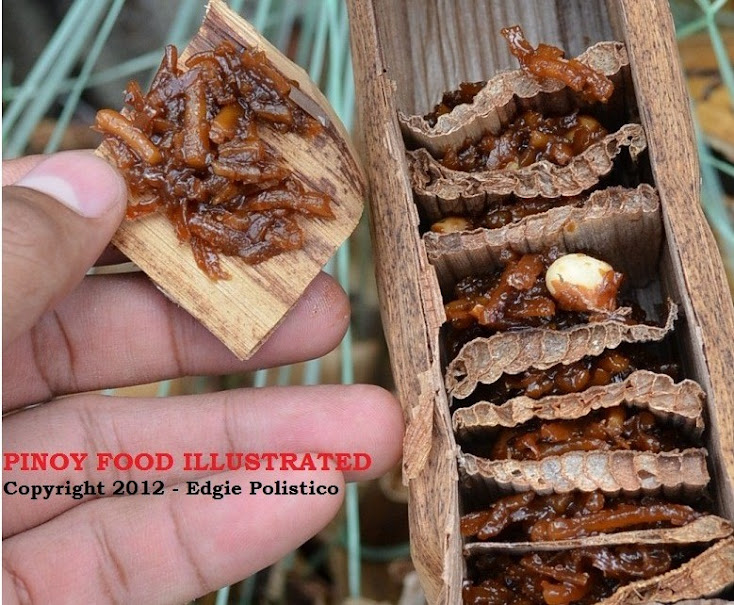 |
You don't have to go to Marawi City in Mindanao to have a taste of palapa. We find these bottled palapa in one of a Muslim stalls we found in a Muslim Community of Quiapo, Manila.
palapa - /pa-lá-pa/ (Maranao condiment) [n.] a mixture of thinly chopped sakurab (Muslim Mindanao scallion), lots of finely sliced luya tiduk (Philippine bird’s eye chili), pounded luya pagirison (ginger), and some toasted grated niog (coconut). They are combined, pounded, cooked on a big pan, stirred continuously until aromatic, removed from cooking, let cool, and then stored in a garapon (small jar with cap). Palapa can be dry (if cooked over a long time until moisture is reduced, but not totally dry) or moist (when cooked briefly).
When needed in cooking, palapa is sautéed first and added with the optional spoonful of condensed milk before palapa is used as a seasoning to a particular dish.
Let us know your opinion on the subject. Feel free to comment in the comment section, below. It is important for us to know what you think.
Tell us what other topics you would like us to write, share, and discuss about.
For more about Filipino food, see this Philippine Food, Cooking, and Dining Dictionary. It is OPEN and FREE.
Continue to follow my blogs. You can also follow and learn more by joining us in our Facebook group. Have more bits and pieces about our kind of food, ingredients, and ways of cooking, dining, and knowing food culture across the 7,641 islands of the Philippines.
Encouragement and enthusiasm are not enough. I also need moral support, prayers, and anything else that can uplift my spirit and keep my good reasons. Keep them coming. All I know is that I am happy with what I am sharing and giving away. If you are pleased and happy with what I am doing, just smile and please share the happiness. Keep sharing and include to share the PHILIPPINE FOOD ILLUSTRATED. I feel energized when my blog becomes one of the reasons why you are happy and smiling.
Edgie Polistico
.jpg)
.jpg)

a.jpg)
.jpg)

.jpg)
.jpg)
.jpg)














